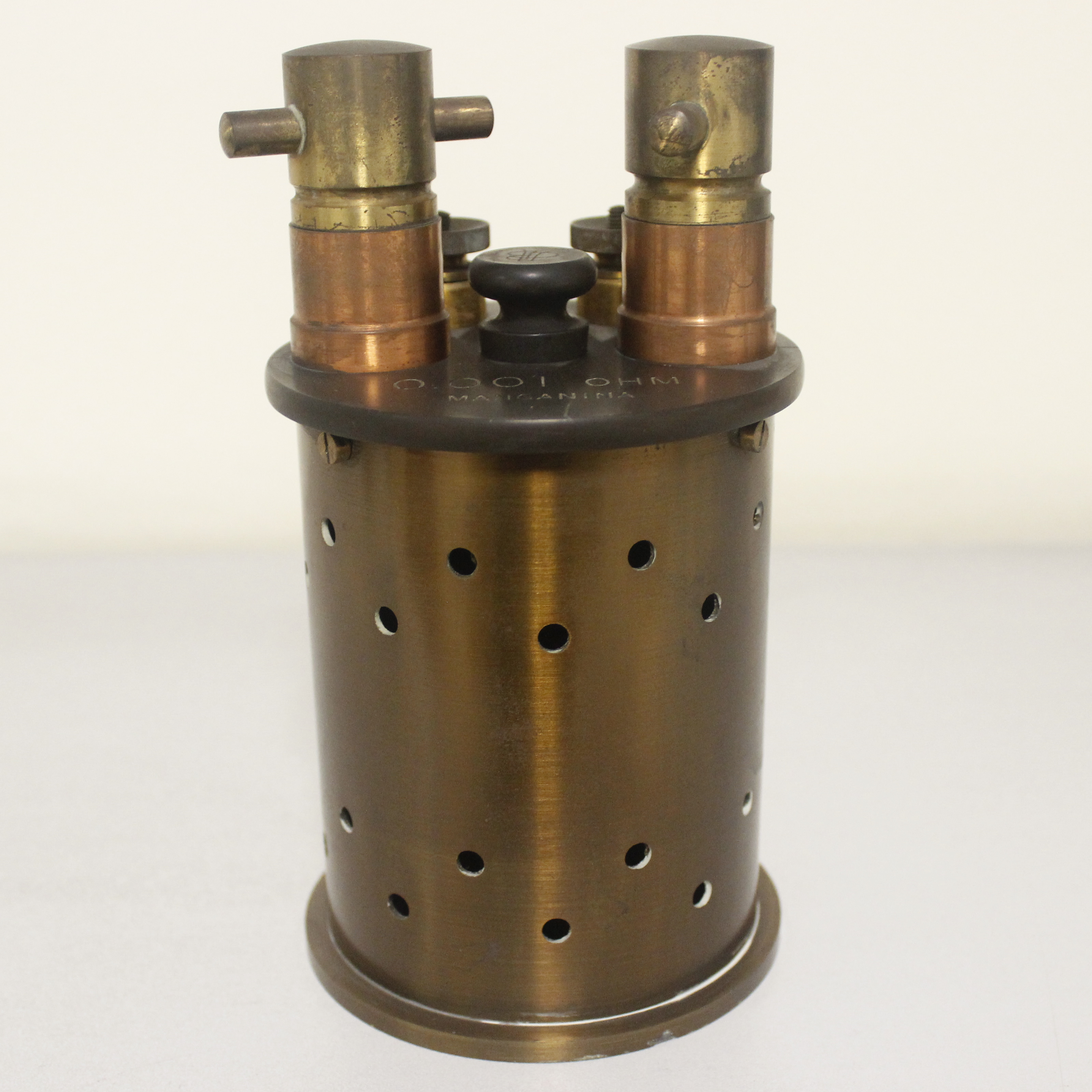
This is a 0.1 Henry reference inductor, which is used to perform laboratory calibrations. It is made up of a coil enclosed in a cylindrical container with two copper clamps for the external connection
INSIGHTS
From the construction details, the history of the manufacturer and the serial number, this inductor can be dated back to the 1950s.
At the time, the reference inductors were made up of insulated copper windings in strands to reduce the Eddy currents. Also, the section was relatively large in order to contain the ohmic resistance.
Reference inductors had inductance values between 0,0001 H and 1 H, and a corresponding equivalent series resistance ranging from 0,2 to a few hundred ohms.
The elements supporting the windings must prevent the deformations that can alter the calibration.
Additionally, they must be made of insulating material – and not ferromagnetic – to avoid the
phenomenon of the Eddy currents. The most suitable materials were porcelain, marble, or
serpentine. The biggest drawback is their sensitivity to the external magnetic fields.
To mitigate this issue, the coil is split into two windings wound in the opposite direction, or we toroidal windings are adopted. Reference inductors were used to measure the unknown value of other inductors via the Maxwell Bridge.